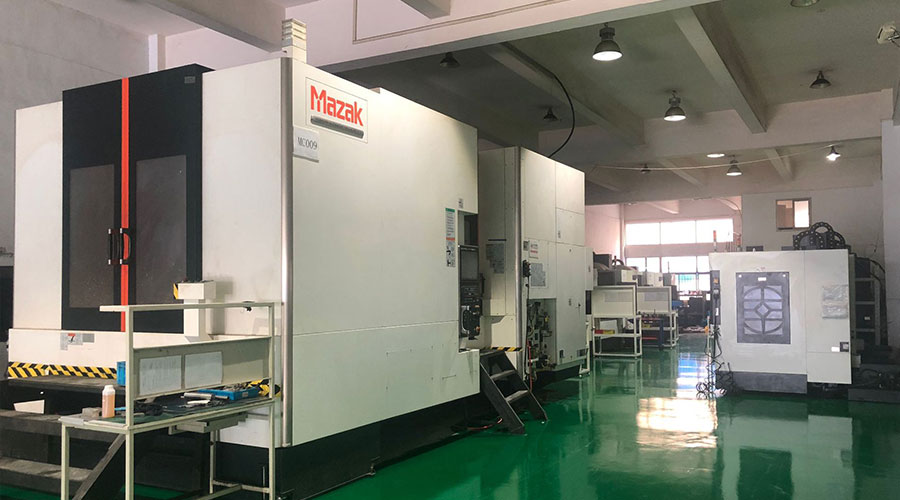The smelting methods used in the domestic aluminum industry generally include batch smelting and semi-continuous smelting. The batch smelting method refers to a smelting method that takes one smelting time as a cycle, from the beginning of furnace loading and melting to the end of refining and downturning.
This method is mostly suitable for the production of finished alloys with higher quality requirements but not too large batches to ensure the accuracy and uniformity of the chemical composition. Generally, all special products, namely all alloy forgings and die forgings; aircraft beam profiles, stage variable section profiles and small hollow beam profiles used in the aviation industry; alloy products used in the atomic energy industry are all melted in this way. Semi-continuous smelting method refers to the same alloy as a production cycle, each time the output is only one-half to one-third of the total melt in the furnace, and then a little more new charge than the above is added to continue melting. .

The advantage of this method is that the charge is immersed in the melt, which not only reduces the burning loss, but also increases the melting speed. At the same time, the temperature in the furnace does not fluctuate much, and it has a good protective effect on the furnace bottom, which is beneficial to improve the furnace life. The disadvantage is that the composition needs to be effectively controlled, and there is always residual material in the furnace, which is easy to cause local overheating, and the tendency of the ingot to produce coarse grains increases. This method is suitable for alloy products with large smelting batches, low grades of furnace materials, and no special requirements for melt quality. Generally, pure aluminum products, 6063 building materials products, and alloy products with recycled waste as the main charge are all smelted by this method.
The typical melting process of wrought aluminum alloy is as follows: furnace preparation → charge preparation → batching → furnace loading → melting → copper and zinc → slag removal after melting → magnesium and beryllium → stirring → sampling analysis → composition adjustment → stirring → slag removal →Invert the furnace → refining → cover with slagging → stand still and adjust the temperature → measure hydrogen in front of the furnace → discharge from the furnace → clean the furnace
The above process is usually completed in a smelting furnace and a static furnace. Among them, the smelting furnace is responsible for the task of melting and adjusting the composition, and the static furnace is responsible for the task of purifying the melt and keeping warm. The advantage of this configuration of equipment is that it can give full play to the production efficiency of the smelting furnace, which not only guarantees the quality of the smelting, but also increases the output. Some factories put the above process flow in a furnace to complete.
At this time, the furnace is responsible for the dual tasks of smelting and standing, which is called a smelting and holding furnace. If the furnace is single-chamber, the equipment configured in this way cannot fully utilize the production efficiency of the smelting furnace, and the energy consumption is relatively large. In addition, there are some domestic factories that melt in a flame reverberatory furnace, and then use a ladle to transfer the aluminum water into the resistance reverberant furnace to adjust the composition and temperature, and then purify the melt and keep the temperature in the standing furnace. This equipment configuration takes up three furnaces, and the number of transfers of liquid metal is large, and the transfer time is also longer, which causes serious pollution of the melt and increased melting loss. The ladle used for transfer requires special equipment for heating. Therefore, from the quality and output , Energy consumption is very unfavorable.
Link to this article: Aluminum alloy smelting method and process flow
Reprint Statement: If there are no special instructions, all articles on this site are original. Please indicate the source for reprinting:https://www.cncmachiningptj.com/,thanks!
 PTJ® provides a full range of Custom Precision cnc machining china services.ISO 9001:2015 &AS-9100 certified. 3, 4 and 5-axis rapid precision CNC machining services including milling, sheet metal to customer specifications,Capable of metal & plastic machined parts with +/-0.005 mm tolerance.Secondary services include CNC and conventional grinding, laser cutting,drilling,die casting,sheet metal and stamping.Providing prototypes, full production runs, technical support and full inspection.Serves the automotive, aerospace, mold&fixture,led lighting,medical,bicycle, and consumer electronics industries. On-time delivery.Tell us a little about your project’s budget and expected delivery time. We will strategize with you to provide the most cost-effective services to help you reach your target,Welcome to Contact us ( [email protected] ) directly for your new project.
PTJ® provides a full range of Custom Precision cnc machining china services.ISO 9001:2015 &AS-9100 certified. 3, 4 and 5-axis rapid precision CNC machining services including milling, sheet metal to customer specifications,Capable of metal & plastic machined parts with +/-0.005 mm tolerance.Secondary services include CNC and conventional grinding, laser cutting,drilling,die casting,sheet metal and stamping.Providing prototypes, full production runs, technical support and full inspection.Serves the automotive, aerospace, mold&fixture,led lighting,medical,bicycle, and consumer electronics industries. On-time delivery.Tell us a little about your project’s budget and expected delivery time. We will strategize with you to provide the most cost-effective services to help you reach your target,Welcome to Contact us ( [email protected] ) directly for your new project.
Link to this article:Aluminum alloy smelting method and process flow
Reprint Statement: If there are no special instructions, all articles on this site are original. Please indicate the source for reprinting.:Cut Wiki,Thanks!^^
